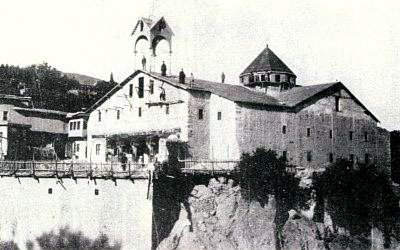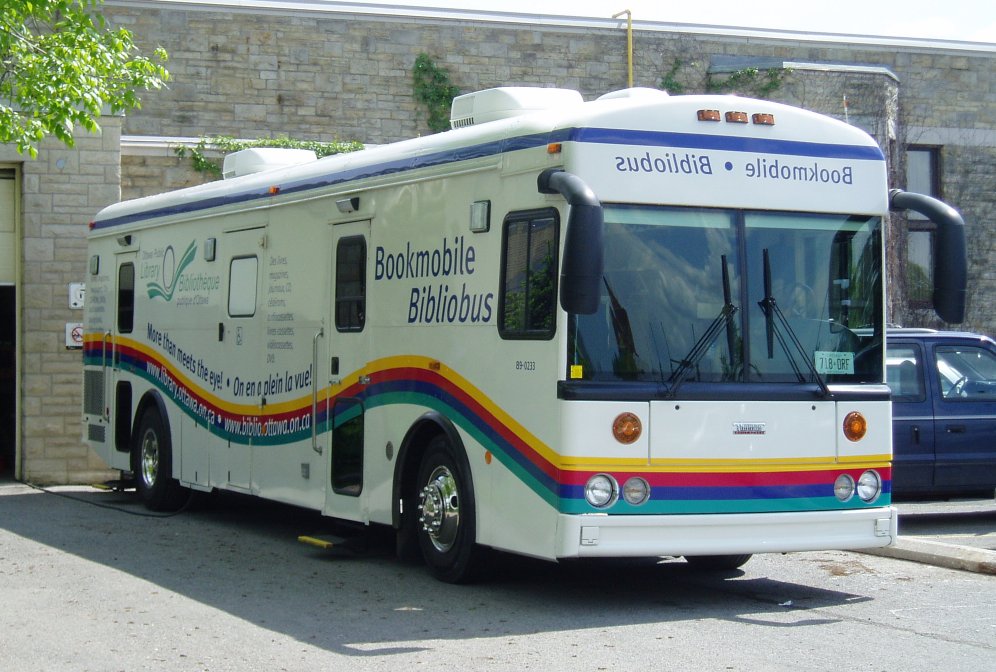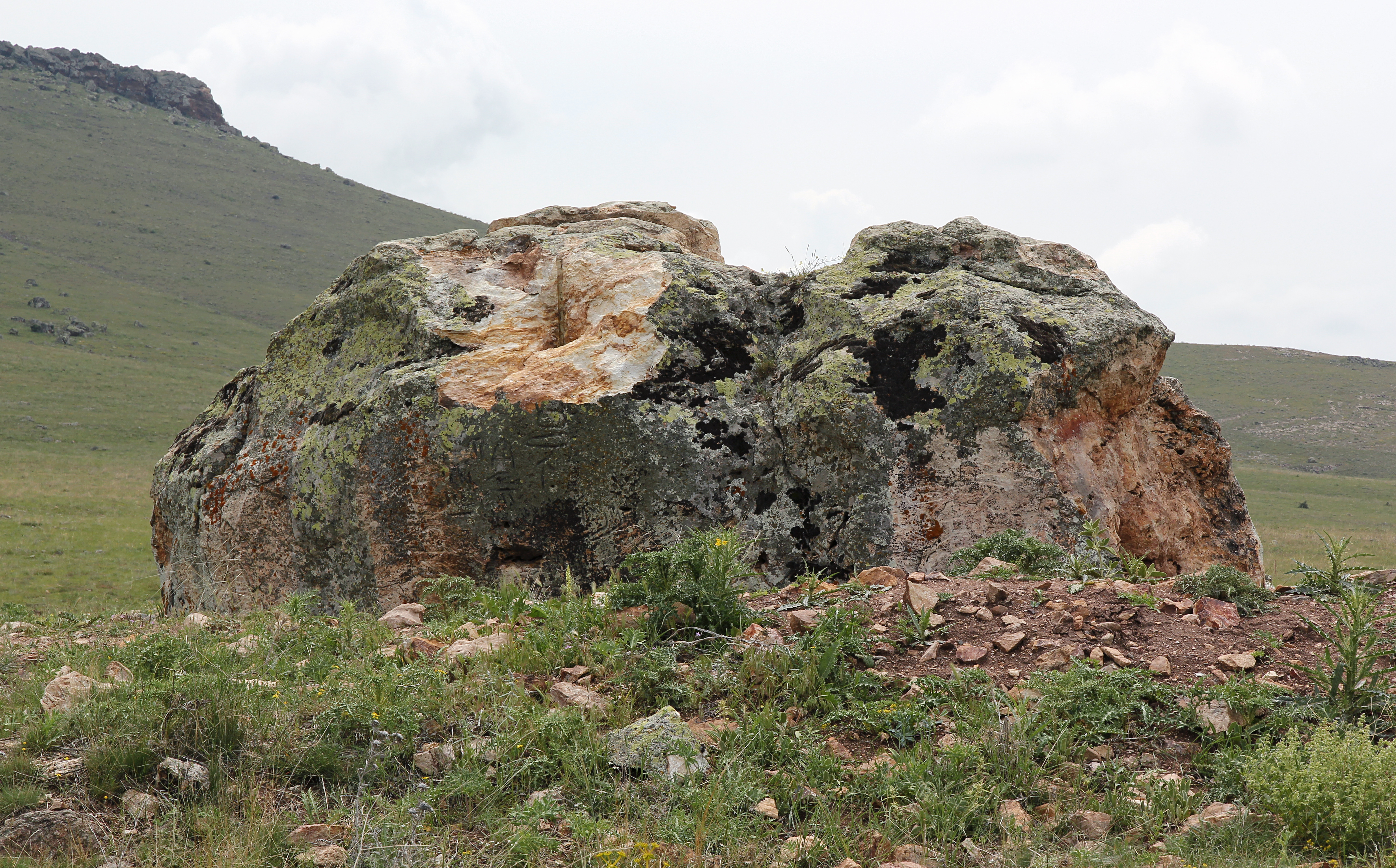|
Urfa Halkevi
The Urfa Halkevi was a halkevi ("people's house", or community center) that existed in the Turkish city of Urfa from 1934 to 1951. It organized a variety of activities in 8 branches (originally 7) and promoted the ideology of the ruling Republican People's Party, or CHP. History Urfa's halkevi was established on 23 February 1934. Its building was built on the site that had earlier been occupied by a vocational school called the Mekteb-i Sanayi. The halkevi's first president was Musa Kazım Yazgan. Unusually, the Urfa Halkevi was established without a CHP party organization — the local CHP organization was only established in 1944 — and as a result had both financial and communication difficulties from the beginning. The halkevi opened with only 7 branches: Language and Literature, Fine Arts, Representation, Sport, Social Assistance, Library and Publication, and Villagers. Two of the standard halkevi branches — the Museum and Exhibition branch and the People's Classroom and C ... [...More Info...] [...Related Items...] OR: [Wikipedia] [Google] [Baidu] |
Urfa
Urfa, officially known as Şanlıurfa () and in ancient times as Edessa, is a city in southeastern Turkey and the capital of Şanlıurfa Province. Urfa is situated on a plain about 80 km east of the Euphrates River. Its climate features extremely hot, dry summers and cool, moist winters. About northeast of the city is the famous Neolithic site of Göbekli Tepe, the world's oldest known temple, which was founded in the 10th millennium BC. The area was part of a network of the first human settlements where the agricultural revolution took place. Because of its association with Jewish, Christian, and Islamic history, and a legend according to which it was the hometown of Abraham, Urfa is nicknamed the "City of Prophets." Religion is important in Urfa. The city "has become a center of fundamentalist Islamic beliefs" and "is considered one of the most devoutly religious cities in Turkey". The city is located 30 miles from the Atatürk Dam, at the heart of the Southeast Ana ... [...More Info...] [...Related Items...] OR: [Wikipedia] [Google] [Baidu] |
Halkevi
Halkevleri (Turkish: ''Halkevi'' literally meaning "people's houses", also translatable as "community centres") is the name of a Turkish community enlightenment project. They were founded in 1932 and entirely abolished in 1951. Background The Turkish Republic was proclaimed in 1923 after a series of costly wars involving the Ottoman Empire. The human loss was great, especially among the intellectuals. Also, the most profitable agricultural land had been lost, and the country was economically bankrupt. After the republic was proclaimed, measures were taken to raise the low literacy rate and to improve the economy. However, the great depression was another blow to the new republic. A second problem of the new republic was the reaction of the conservatives against the reforms, especially the secularist practices of the republic. The Halkevleri can be seen as the successors of the Turkish Hearths, a Turkish social institution that was disestablished before the founding of the Halkevl ... [...More Info...] [...Related Items...] OR: [Wikipedia] [Google] [Baidu] |
Buildings And Structures In Şanlıurfa
A building, or edifice, is an enclosed structure with a roof and walls standing more or less permanently in one place, such as a house or factory (although there's also portable buildings). Buildings come in a variety of sizes, shapes, and functions, and have been adapted throughout history for a wide number of factors, from building materials available, to weather conditions, land prices, ground conditions, specific uses, monument, prestige, and aesthetic reasons. To better understand the term ''building'' compare the list of nonbuilding structures. Buildings serve several societal needs – primarily as shelter from weather, security, living space, privacy, to store belongings, and to comfortably live and work. A building as a shelter represents a physical division of the :Human habitats, human habitat (a place of comfort and safety) and the ''outside'' (a place that at times may be harsh and harmful). Ever since the first cave paintings, buildings have also become objects or ... [...More Info...] [...Related Items...] OR: [Wikipedia] [Google] [Baidu] |
1934 Establishments In Turkey
Events January–February * January 1 – The International Telecommunication Union, a specialist agency of the League of Nations, is established. * January 15 – The 8.0 Nepal–Bihar earthquake strikes Nepal and Bihar with a maximum Mercalli intensity of XI (''Extreme''), killing an estimated 6,000–10,700 people. * January 26 – A 10-year German–Polish declaration of non-aggression is signed by Nazi Germany and the Second Polish Republic. * January 30 ** In Nazi Germany, the political power of federal states such as Prussia is substantially abolished, by the "Law on the Reconstruction of the Reich" (''Gesetz über den Neuaufbau des Reiches''). ** Franklin D. Roosevelt, President of the United States, signs the Gold Reserve Act: all gold held in the Federal Reserve is to be surrendered to the United States Department of the Treasury; immediately following, the President raises the statutory gold price from US$20.67 per ounce to $35. * February 6 – French ... [...More Info...] [...Related Items...] OR: [Wikipedia] [Google] [Baidu] |
Arapkir
Arapgir ( hy, Արաբկիր; ku, Erebgir) is a town and district of Malatya Province, Turkey. As of 2000 it had a population of 17,070 people. It is situated at the confluence of the eastern and western Euphrates, but some miles from the right bank of the combined streams. Arapgir is connected with Sivas by a ''chaussée'', prolonged to the Euphrates river. The present town was built in the mid-19th century, but about 2 miles north-east is the old town, now called Eskişehir ("old city" in Turkish). Demographics Arapgir town is populated by Kurds. In descending order of population, the district is populated by Turks and Kurds and also historically had an Armenian population. Composition History Arapgir is a market town and received significant Seljuk Turkish arrivals in the 12th century. Population According to Donald Quataert, Arapgir in the 1880s was made up of 4,802 Muslim and 1,200 Armenian households, with a total population of about 29,000 persons. According to a ... [...More Info...] [...Related Items...] OR: [Wikipedia] [Google] [Baidu] |
Muhtar (title)
A muhtar is the elected village head in villages of Turkey. In cities, likewise, each neighbourhood has a muhtar but with a slightly different status. Muhtars and their village councils ( tr, Azalar or İhtiyar heyeti) are elected during local elections for five years. However, political parties are not permitted to nominate candidates for these posts. Rural muhtars In each village, the muhtar is the highest elected authority of the village. (There is no mayor in a village.) According to the Village Law, tasks of the muhtars are in two groups: compulsory tasks are about public health, primary school education, security and notification of public announcements, etc. Noncompulsory tasks depend on the demands of village residents. Urban muhtars In each town A town is a human settlement. Towns are generally larger than villages and smaller than cities, though the criteria to distinguish between them vary considerably in different parts of the world. Origin and use The wor ... [...More Info...] [...Related Items...] OR: [Wikipedia] [Google] [Baidu] |
Accumulator (energy)
An accumulator is an energy storage device: a device which accepts energy, stores energy, and releases energy as needed. Some accumulators accept energy at a low rate (low power) over a long time interval and deliver the energy at a high rate (high power) over a short time interval. Some accumulators accept energy at a high rate over a short time interval and deliver the energy at a low rate over longer time interval. Some accumulators typically accept and release energy at comparable rates. Various devices can store thermal energy, mechanical energy, and electrical energy. Energy is usually accepted and delivered in the same form. Some devices store a different form of energy than what they receive and deliver performing energy conversion on the way in and on the way out. Examples of accumulators include steam accumulators, mainsprings, flywheel energy storage, hydraulic accumulators, rechargeable batteries, capacitors, inductors, compensated pulsed alternators (compulsators), and ... [...More Info...] [...Related Items...] OR: [Wikipedia] [Google] [Baidu] |
Mobile Libraries
A bookmobile or mobile library is a vehicle designed for use as a library. They have been known by many names throughout history, including traveling library, library wagon, book wagon, book truck, library-on-wheels, and book auto service. Bookmobiles expand the reach of traditional libraries by transporting books to potential readers, providing library services to people in otherwise underserved locations (such as remote areas) and/or circumstances (such as residents of retirement homes). Bookmobile services and materials (such as Internet access, large print books, and audiobooks), may be customized for the locations and populations served. Bookmobiles have been based on various means of conveyance, including bicycles, carts, motor vehicles, trains, watercraft, and wagons, as well as camels, donkeys, elephants, horses, and mules. History 19th century In the United States of America, The American School Library (1839) was a traveling frontier library published by Harper & Bro ... [...More Info...] [...Related Items...] OR: [Wikipedia] [Google] [Baidu] |
Child Protection Agency
A child ( : children) is a human being between the stages of birth and puberty, or between the developmental period of infancy and puberty. The legal definition of ''child'' generally refers to a minor, otherwise known as a person younger than the age of majority. Children generally have fewer rights and responsibilities than adults. They are classed as unable to make serious decisions. ''Child'' may also describe a relationship with a parent (such as sons and daughters of any age) or, metaphorically, an authority figure, or signify group membership in a clan, tribe, or religion; it can also signify being strongly affected by a specific time, place, or circumstance, as in "a child of nature" or "a child of the Sixties." Biological, legal and social definitions In the biological sciences, a child is usually defined as a person between birth and puberty, or between the developmental period of infancy and puberty. Legally, the term ''child'' may refer to anyone below the a ... [...More Info...] [...Related Items...] OR: [Wikipedia] [Google] [Baidu] |
Kırşehir
Kırşehir, formerly Mocissus ( grc, Μωκισσός) and Justinianopolis (Ἰουστινιανούπολις), is a city in Turkey. It is the capital district of the Kırşehir Province. According to the 2000 census, the population of the district is 121,947 of which 105,826 live in the city of Kırşehir. The Mayor of Kırşehir is Selehattin Ekicioğlu. History The history of Kırşehir dates back to the Hittites. During the period of the Hittites, the basin of Kırşehir was known as the country of "Ahiyuva", meaning "the Land of the Achaeans", as the Greeks were known to the Hittites. This basin also took the name Cappadocia at the time of the Roman Empire, Romans and Byzantines. Kırşehir was once known as Aquae Saravenae. The Seljuks took the city in the 1070's and bestowed the current name. In Turkish language, Turkish, "''Kır Şehri''" means "''steppe city''" or "''prairie city''". It became the chief town of a sanjak in the Ottoman Empire, Ottoman vilayet of Ang ... [...More Info...] [...Related Items...] OR: [Wikipedia] [Google] [Baidu] |
1938 Kırşehir Earthquake
The 1938 Kırşehir earthquake occurred at 12:59 local time on 19 April. It had an estimated surface wave magnitude of 6.7 and a maximum intensity of IX (''Violent'') on the Mercalli intensity scale, causing 224 casualties. See also * List of earthquakes in 1938 *List of earthquakes in Turkey This is a list of earthquakes in Turkey, including any notable historical earthquakes that have epicenters within the current boundaries of Turkey, or which caused significant effects in this area. Overall, the population in major cities like Ist ... References 1938 Kırşehir 1938 earthquakes 1938 in Turkey History of Kırşehir Province April 1938 events {{Turkey-hist-stub ... [...More Info...] [...Related Items...] OR: [Wikipedia] [Google] [Baidu] |
Diyarbakır
Diyarbakır (; ; ; ) is the largest Kurdish-majority city in Turkey. It is the administrative center of Diyarbakır Province. Situated around a high plateau by the banks of the Tigris river on which stands the historic Diyarbakır Fortress, it is the administrative capital of the Diyarbakır Province of southeastern Turkey. It is the second-largest city in the Southeastern Anatolia Region. As of December 2021, the Metropolitan Province population was 1,791,373 of whom 1,129,218 lived in the built-up (or metro) area made of the 4 urban districts ( Bağlar, Kayapınar, Sur and Yenişehir). Diyarbakır has been a main focal point of the conflict between the Turkish state and various Kurdish separatist groups, and is seen by many Kurds as the de facto capital of Kurdistan. The city was intended to become the capital of an independent Kurdistan following the Treaty of Sèvres, but this was disregarded following subsequent political developments. Names and etymology Th ... [...More Info...] [...Related Items...] OR: [Wikipedia] [Google] [Baidu] |

.jpg)






